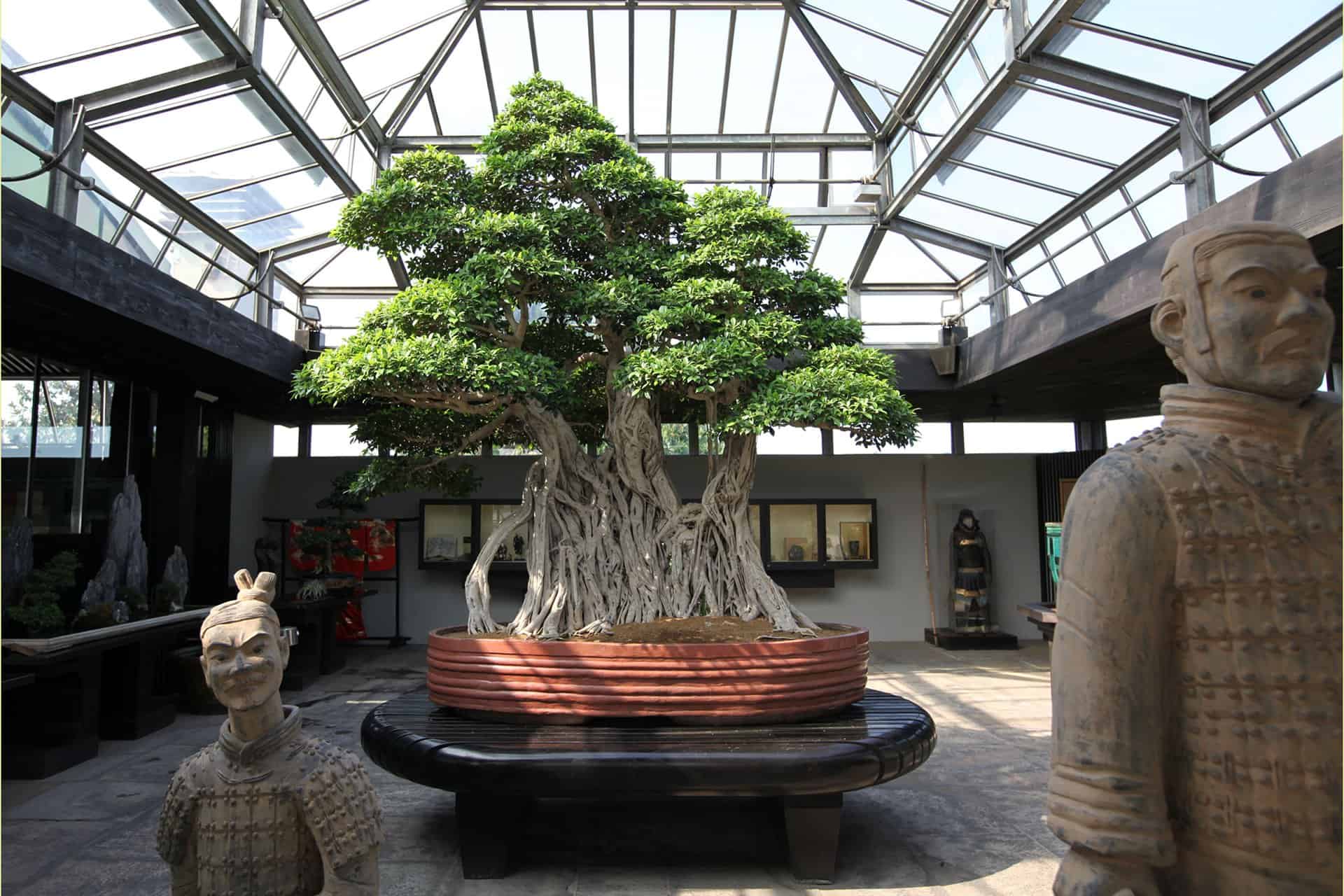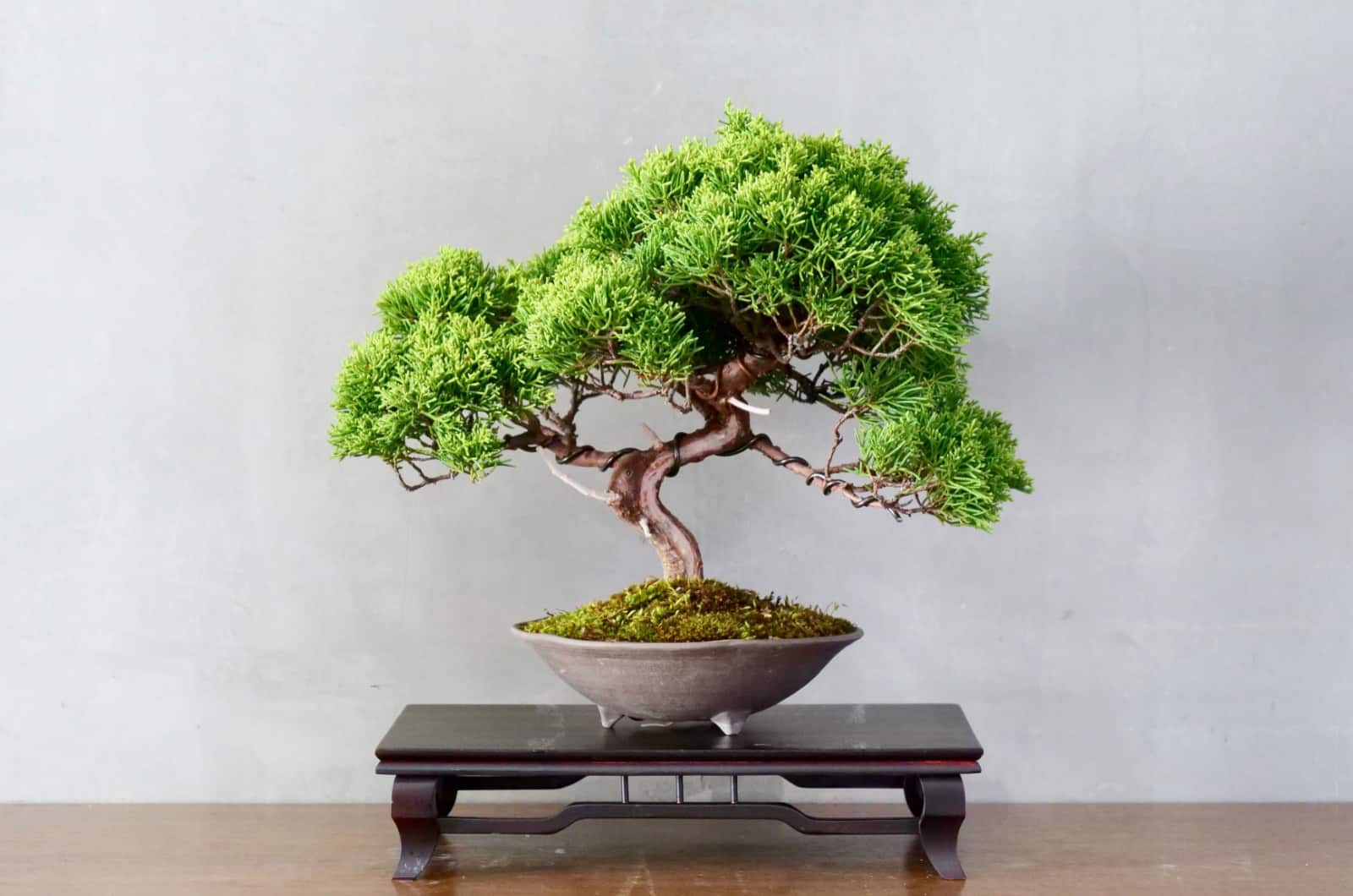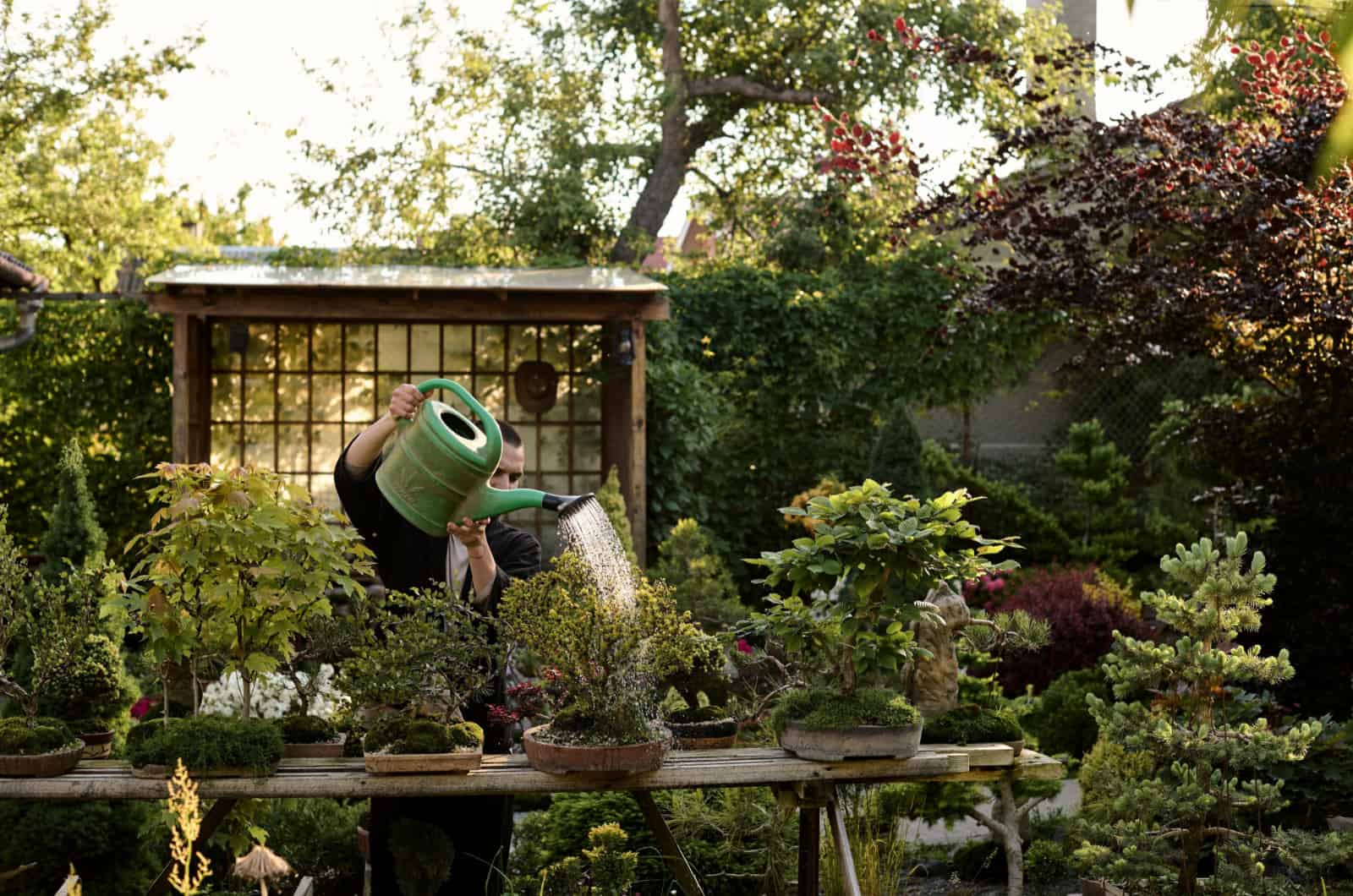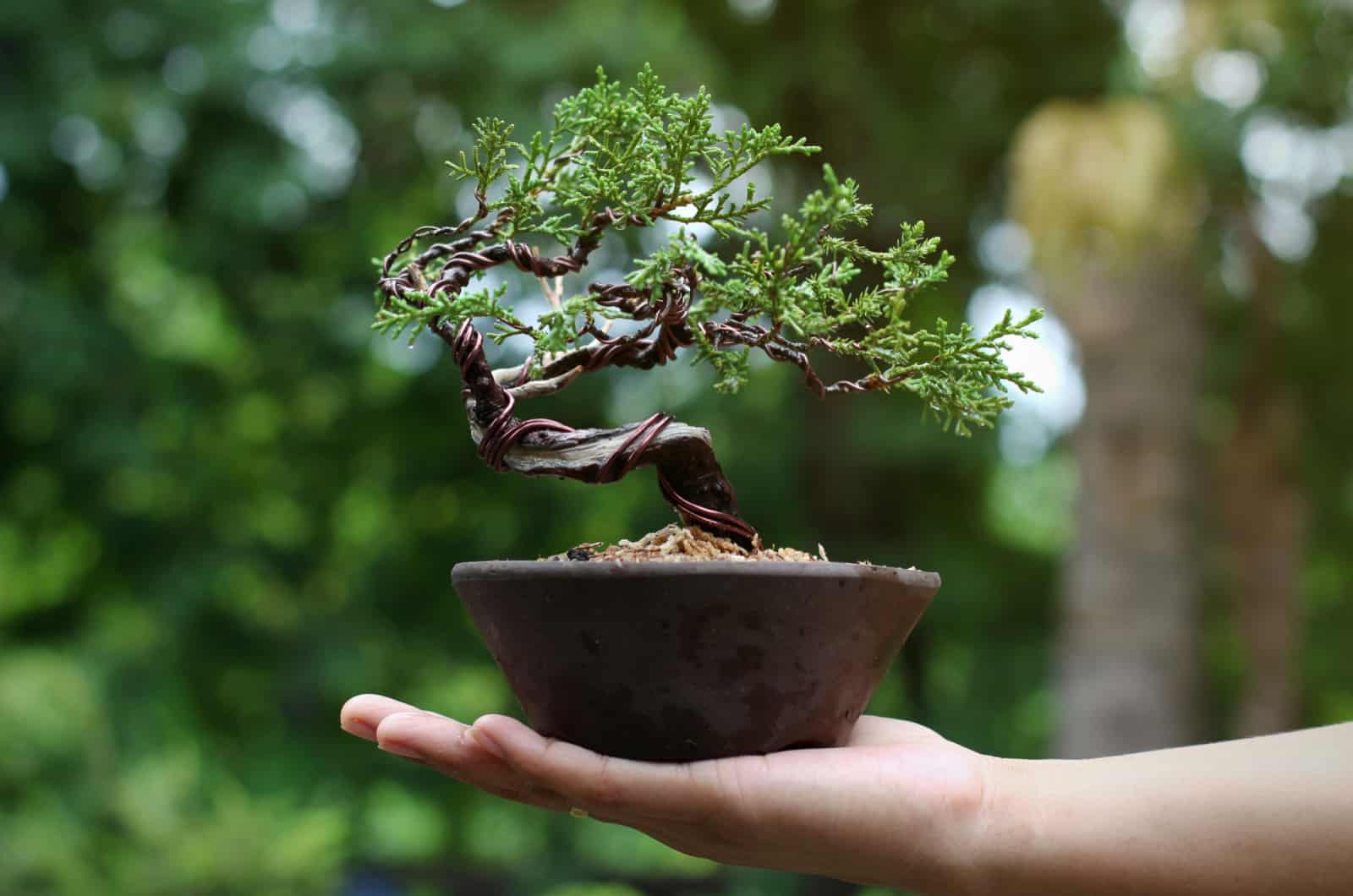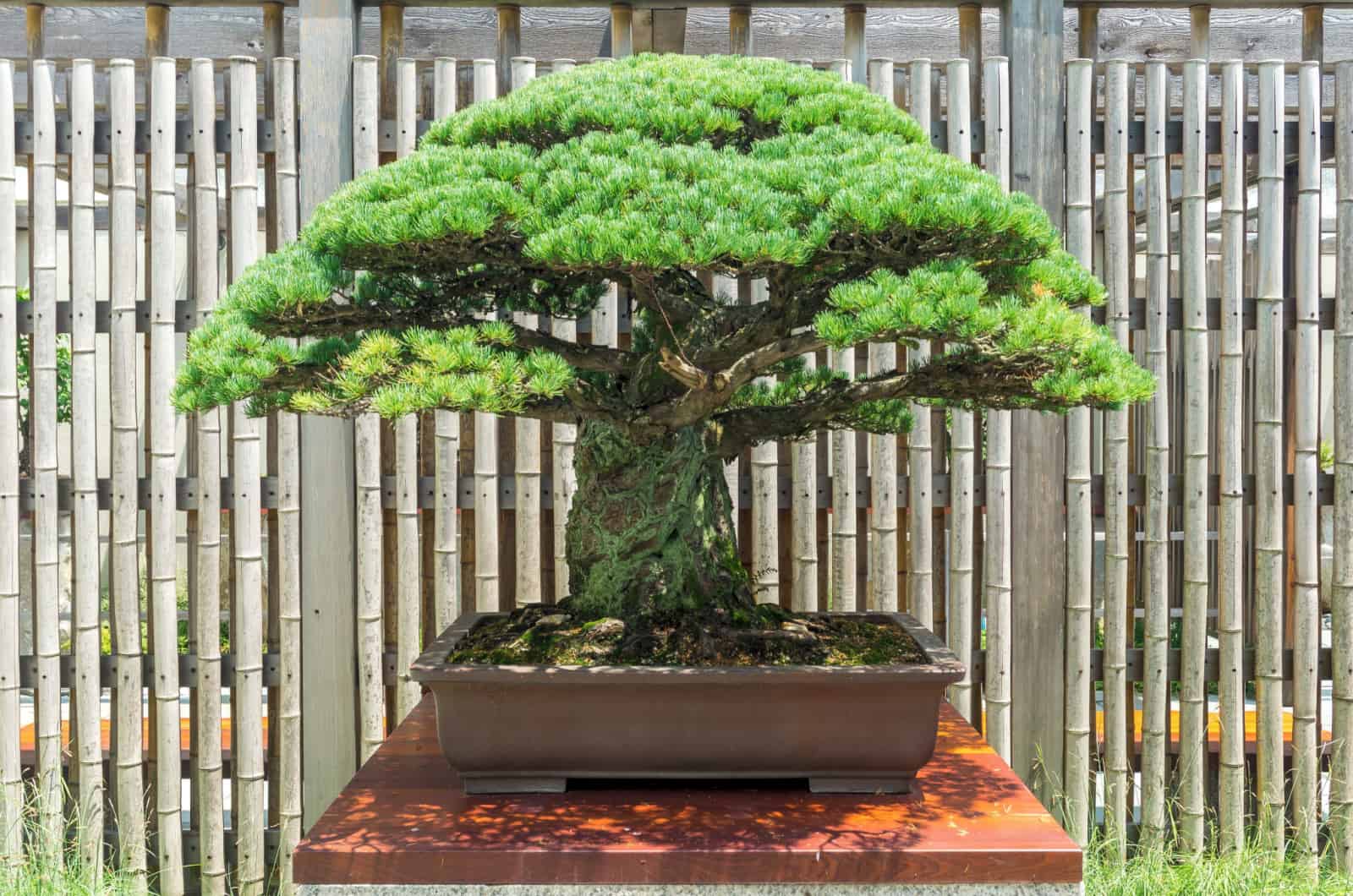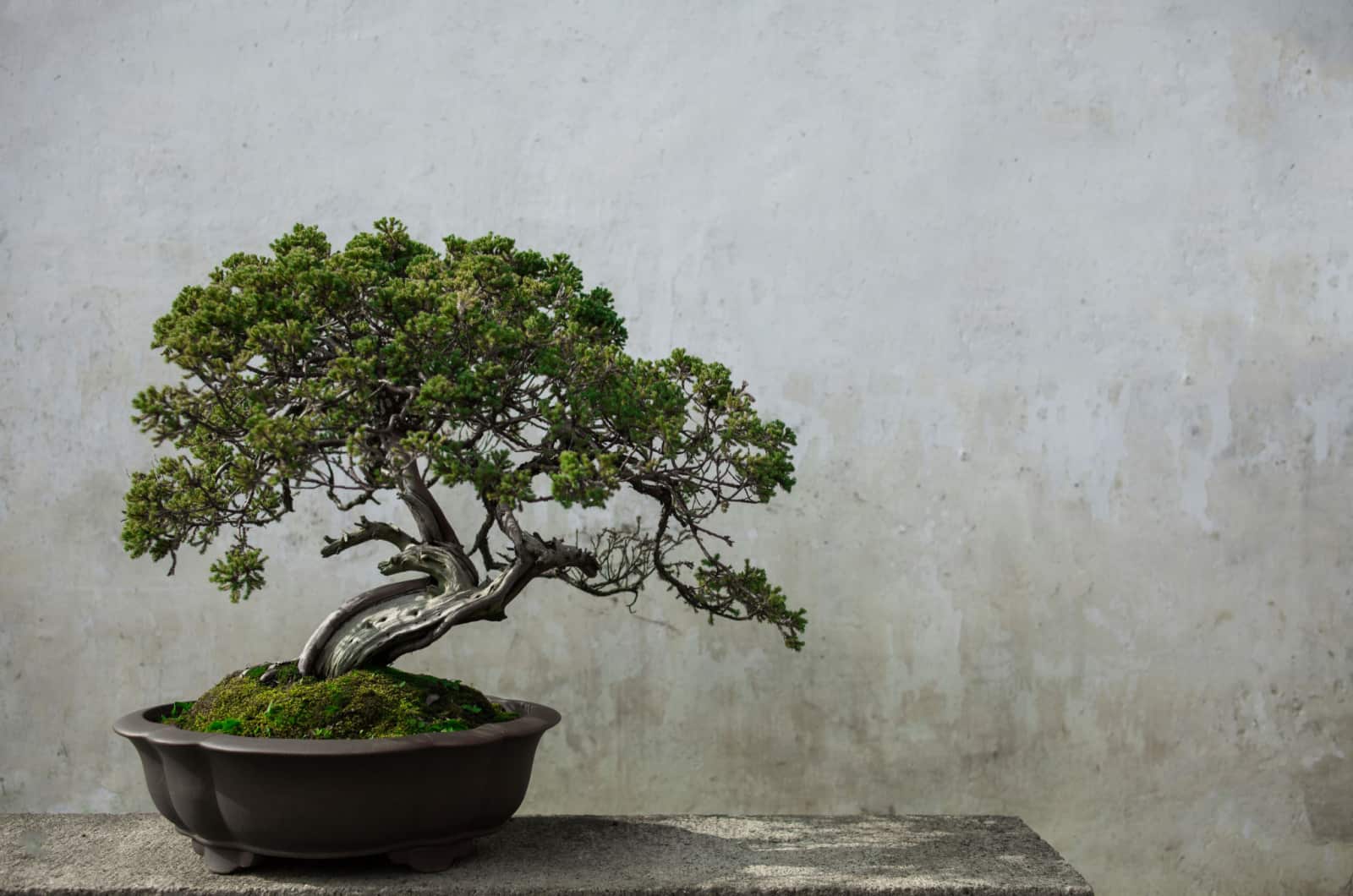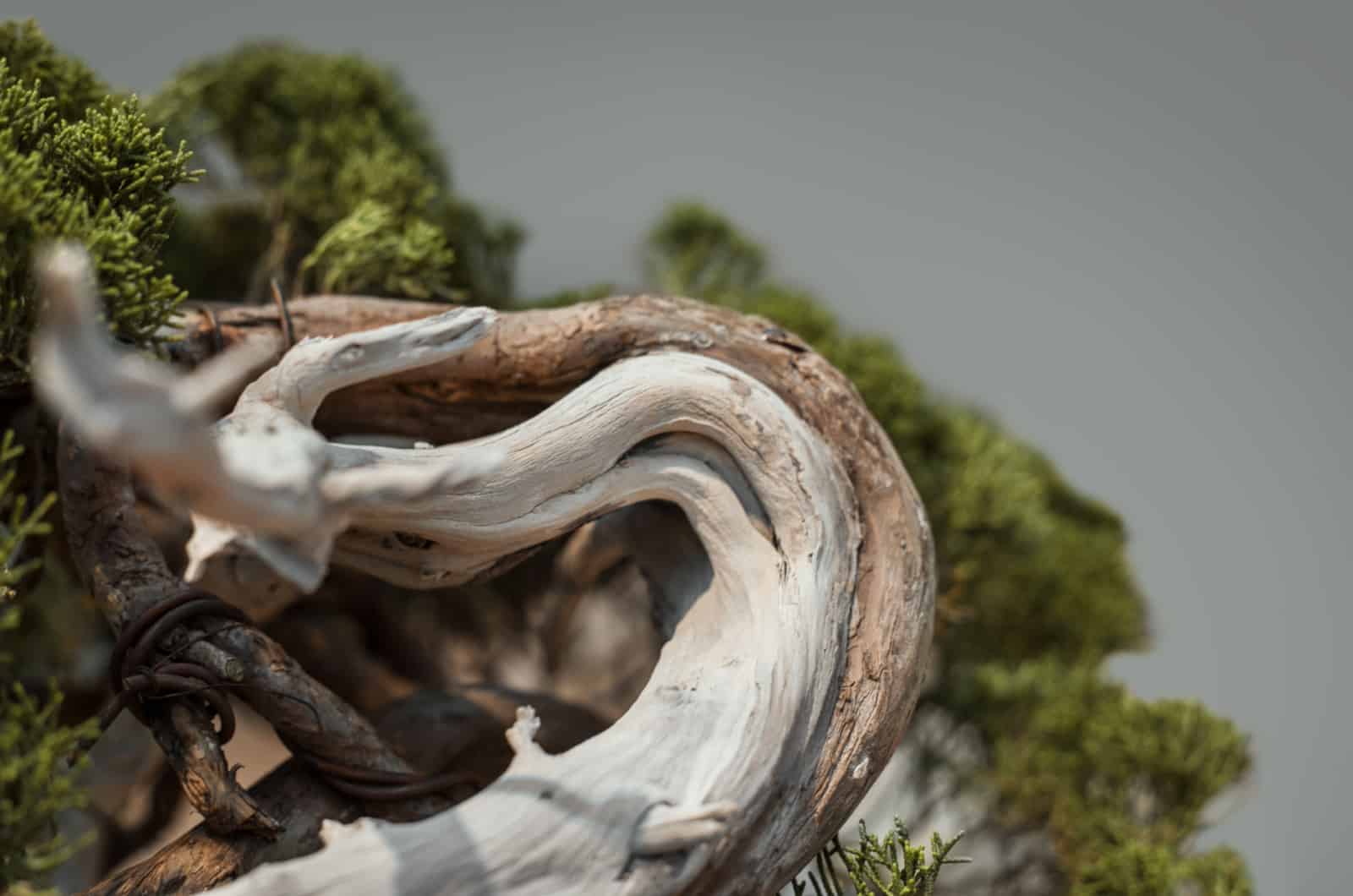I think most people are already pretty familiar with the lifespan of a tree — I mean, they can stand firmly in one place for centuries!
However, with the new Japanese practice of growing indoor Bonsai trees, we are now wondering what the oldest Bonsai tree looks like. This artwork dates back to the 6th century BCE, so there must be one that has been growing for decades or even centuries!
When you think about the oldest Bonsai tree, your mind probably depicts a large tree with thick branches… However, this is not entirely true.
These trees are grown indoors primarily because they don’t grow as big and they are easily adapted to indoor conditions.
So, if you want to find out what the oldest Bonsai tree looks like, keep reading!
What Is The Oldest Bonsai Tree In The World?
Photo from: crespibonsai.com
We will begin with the oldest Bonsai tree in the entire world!
The oldest Bonsai is called Ficus retusa linn, otherwise known as the Crespi Ficus, because it is exhibited at the entrance of the Crespi Bonsai Museum in Milan, Italy. The owner of this museum, Luigi Crespi, fought for decades for this unique Bonsai tree, and finally got ownership in 1986.
This tree was carefully crafted by the Chinese masters, and once it got to Italy it was properly taken care of by a man called Shotaro Kawahara, a Bonsai master from Japan who carefully pruned the tree to maintain its shape.
After a year, Crespi and his buddy Alberto Lavazza learned everything there is to know about Bonsai trees and continued taking good care of the Ficus retusa linn!
When Luigi Crespi opened his museum in 1991, the tree became a centerpiece of the museum! It was placed in a glass pagoda, and now it adorns the entrance of the museum.
Though there were negotiations between China and Italy about the ownership of this Ficus Bonsai tree, Italy managed to keep its prized Bonsai beauty!
Now, let’s discuss the tree a bit more — the Ficus retusa linn is a Bonsai tree that is over 1000 years old!
This tree mesmerizes with a network of dense aerial roots and a flawlessly balanced form, which is no surprise because it has been taken care of with love for so long!
It is also 10 feet tall, which makes it a great centerpiece for any exhibition. What’s also interesting is that the tree’s pot is made out of a single piece of wood, and it is also the largest Bonsai pot in the entire world!
If you ever visit Milan, I would suggest you definitely visit this museum because you will be able to see the most beautiful Bonsai trees from all over the world there.
Bonsai Tree Life Cycle
When we think of a Bonsai tree, we usually think about a small tree with a thick trunk and green foliage — that is, a tree that is already mature. However, these trees are slow-growers, and they take their sweet time during the seedling stage to develop and establish.
In comparison to other typical trees, a Bonsai tree will require a little more time to mature. You will need to wait 10 to 15 years if you choose to cultivate a Bonsai tree indoors from seeds.
If your Bonsai grows slowly and doesn’t resemble a Bonsai tree for the first five years, don’t be disappointed. Before you can begin pruning or making other modifications to give your Bonsai tree the shape you want, it must be at least four or five years old.
So, if you were wondering how long it takes for a Bonsai tree to grow, we’ll now look at its developmental stages.
Starting From Seeds
If you are about to grow a Bonsai tree from seeds, the first thing you will need is patience! After that, you’ll need the material (seeds, Bonsai soil, suitable pot, etc).
Though this process can be time-consuming, it is totally worth it afterward!
To be honest with you, getting seeds to germinate and reach the seedling stage is super hard. Bonsai seeds do not germinate well, sprout slowly, and are sensitive to changes in temperature, watering schedules, and other factors.
Although this is a very long and difficult procedure, witnessing a Bonsai tree through all its developmental stages is truly a one-of-a-kind experience in the gardening world!
Seedling Stage
If the seeds have successfully germinated, you will be able to see little sprouts coming out of the soil. The seedlings are still fragile at this stage, and can become leggy due to sudden temperature changes, low nutrient content, and infrequent watering.
Many gardeners buy a Bonsai tree that is already somewhat established. Initially, the tree can be a seedling in a 4-inch pot. It is called a sapling and will be potted in a 1-gallon container when it’s around 4 inches tall. It should be up-potted to a 5-gallon pot, and possibly even a larger size pot as the tree grows.
Developmental Stage
During this stage, it’s all about rapid root and trunk development. An older tree will have roots that extend outward from the trunk, and the trunk will be thicker. You need to let your tree grow wild first in order to get this appearance, then you will be able to shape it however you want.
Those long branches need a thick trunk to transmit more nutrients from the roots. They need these minerals and nutrients to grow vigorously. Due to the abundant support, the tree can create more sugar, which it can then use to expand its roots, trunk, and branches, as well as to produce more lush foliage.
A lot of fertilizer should be added during this stage, especially ones that contain more Nitrogen. The ideal ratio would be NPK 10:6:6.
As your baby tree continues to grow, it will require more space. Therefore, you should repot your Bonsai to a larger pot so that it has more space to grow and spread its tiny roots. Make sure to choose a pot that has drainage holes in the bottom, and that it is slightly larger than your previous one.
Develop A Taper
You will need to taper the trunk — this means having a larger diameter near the roots than at the top.
This is done by pruning three branches that are closer to the top, but only after the top has reached the desired diameter. Let those lower branches grow and flourish. After a year or so, the bottom will have a bigger diameter than the top.
Refinement Stage
Even though the trunk’s growth is now mostly over, it will still produce bark and other aging signs. You’ll be striving to improve the branches of your tree at this stage. You should initially concentrate on growing strong branches. Start by cutting down the branches you already have and removing any that are unnecessary.
Depending on the look you want to go for, you’ll have to decide which branches to maintain and which to cut. The optimal period to prune branches is from January to March, just before the tree enters a new growing season.
How Long Do Bonsai Trees Live?
You might be interested in learning how long Bonsai trees live, whether you’re starting one from scratch or you got one from a friend, the response is: “It depends!”.
Your choice of Bonsai tree, whether it’s a Desert Rose or a Jacaranda mimosifolia, will have a considerable impact on how long it lives.
When you first get a Bonsai, thoroughly inspect it. What kind of care has been given to it? Has it received enough water? Does it seem to be in decent condition? This will give you a good indication of how long it will live and how long it will take for your Bonsai to mature.
Most Bonsai trees grow in ten to fifteen years, but others can take as long as thirty.
Even though that may seem like a long time, keep in mind that a typical Bonsai can survive for hundreds of years if it’s kept in good health. I mean, the oldest one is over a thousand years old!
It takes a lot of care to maintain a Bonsai tree’s health, which is why most of them die after their cultivators pass away; because they live far longer than humans.
It’s essential to understand how to trim, fertilize, water, and generally take care of your delicate Bonsai tree so you can give it the best chance of survival.
Read also: How Much Light Do Bonsai Trees Need? All The Answers
Long-Living Bonsai Species
How long a Bonsai tree will live depends entirely on the plant’s care and the environment it’s growing in. For instance, you might be growing a long-living Bonsai species, and you expect it to grow strong and live long.
However, if you don’t take good care of your Bonsai tree, it might not live up to your expectations!
Nonetheless, if you are in it for the long run, then buy any of these Bonsai species:
• Pine — this is an evergreen tree that has needles instead of regular leaves. There are over 115 species, and some of them can be cultivated indoors.
• Maple — the Japanese Maple tree is one of the prettiest indoor trees, which produces red-colored foliage (great for a subtle color pop in the room).
• Cedar — an evergreen conifer tree that is absolutely majestic. Some species can grow up to 35 meters tall!
• Ficus — the ficus Bonsai is one of the most common indoor Bonsai trees, and it is excellent for beginners who want to learn more about the art of Bonsai.
• Cherry — with its lovely baby pink and white leaves, the cherry Bonsai is one of the prettiest Bonsai trees out there!
• Cypress — this Bonsai tree has reddish-brown, needle-like leaves that turn a lovely chestnut color before fall.
• Azalea — this is a hardy Bonsai tree that produces mesmerizing flowers in radiant pink and red colors.
A List Of Old Bonsai Trees From Around The World
We have already discussed the oldest Bonsai tree, but are there any other old Bonsai trees similar to the ones displayed in the Crespi Museum?
As a matter of fact, there are a few absolutely gorgeous and unique Bonsai trees that are also hundreds of years old!
Let’s look at some of the oldest Bonsai beauties from around the world.
1. Juniper Bonsai Tree
Here is yet another Bonsai tree that is believed to be over 1000 years old!
This old Juniper Bonsai is located in the Mansei-en Bonsai nursery, though the tree was found in the wilderness of Japan before it was placed in the nursery. This nursery is owned by the Kato family, who are known for creating the most beautiful Bonsai trees that exude uniqueness and simplicity.
Gathering Bonsai trees from the wild was commonly practiced, especially when the trees were still saplings. They were brought to villages and then carefully nurtured and manufactured into various asymmetrical shapes.
The Omiya Bonsai village is the most famous one, which is made out of six renowned Bonsai gardens. Mansei-en is the oldest garden in the village and has been owned by the Kato family since the 19th century. It was formally opened to the public in 1925. Old Bonsai trees, including a 700-year-old Shimpaku Juniper tree, may also be seen in the garden.
Operation “the Sacred Land of Bonsai”, with its primary goal being to collect one of the prettiest and oldest living Bonsai trees, has been functioning for almost a century. If you ever get the chance to visit, you will see that the operation was successful!
2. Sandai Shogun No Matsu
This five-needle pine, also known as Sandai Shogun No Matsu or Royal Pine, is considered to be a National treasure of Japan. This National Bonsai is a 500-year-old Bonsai tree named after Shogun Tokugawa Iemitsu.
“Pun-sai,” a prehistoric Chinese art style that was formerly exclusive to members of the upper classes, is where Bonsai gets its name. From small-scale farmers to Japanese emperors, everyone adopted the practice as it spread to Japan and developed into Bonsai.
A succession of emperors cared for one of the world’s oldest Bonsai trees for more than 500 years. The Sandai Shogun no Matsu translates as the “third-generation Tokugawa’s pine”. The cherished Bonsai was acquired by Tokugawa Iemitsu, the third shogun of the Tokugawa dynasty, in the 17th century (which is how it got its name).
This tree is now displayed in the Tokyo Imperial Palace collection.
3. The Million Dollar Bonsai
Not only is this Bonsai tree one of the oldest Bonsai trees out there, but it is also the most expensive one!
The usual price range of a Bonsai tree is from $20 up to a million!
These trees are considered to be a piece of artwork, and when their caregiver passes away (as the trees live longer than humans), their prices simply skyrocket. We were always taught that the new is always better, but in the case of Bonsai trees it’s quite the opposite.
Sure, you can find fresh Bonsais on Amazon for a couple of bucks, but their value can not even compare with the ones exhibited in museums and such.
This Million dollar Bonsai tree is 800 years old, and it is displayed in the Shunkaen Bonsai museum, which is owned by Kunio Kobayashi. He is a Bonsai artist with over 30 years of experience. In order to promote Japanese culture, especially the art of Bonsai, and to display the work of himself and his apprentices, Kobayashi founded the Shunkaen Bonsai Museum in 2002.
4. The Hiroshima Pine
This Bonsai tree is special for another reason than being one of the oldest trees in the entire world — it survived an atomic bomb in Hiroshima during World War II!
The Japanese White pine, otherwise known as the Hiroshima pine or the Yamaki pine, is a 400 year old Bonsai tree that survived both the explosion and the chaos that followed.
This ancient tree was donated in 1975 by Bonsai master Masaru Yamaki to the United States as a bicentennial gift. However, its remarkable history was left unknown until 2001, when two of Yamasaki’s grandchildren visited the Museum and told them everything about the survival skills of this special Japanese Bonsai tree.
The Hiroshima pine is placed in the National Arboretum & Penjing Museum in Washington D.C. As the bombing of Hiroshima was commemorated on its 70th anniversary in 2015, the National Arboretum celebrated the history of the tree.
5. Red Pine Bonsai
Red Pine Bonsai, also known as the “Pine of the Phoenix” or the “Dwarf giant”, has two titles: first, it is considered to be one of the oldest Bonsai trees. and second, it is the tallest Bonsai tree in the entire world!
This 600-year-old Bonsai is over 16 feet tall and about 30 feet wide. Even though this tree is gigantic, it is still growing in something that is considered a pot. It is located in the beautiful Akao Herb & Rose Garden in Atami, Japan.
Even though it can not be transported elsewhere in the world, the Dwarf giant rests peacefully in one of the most beautiful gardens in the world.
6. Chabo-hiba Cypress Bonsai
This Bonsai tree is the youngest on the list. It is a small Bonsai tree that spent over two centuries in the same pot — I guess it finds the pot pretty comfy!
Though it is not the oldest one on this list, it is considered to be the oldest Bonsai tree in the USA. Chabo-hiba Bonsai (also known as Hinoki cypress) is kept at Harvard University in Arnold Arboretum.
A sizable collection of Bonsai trees were brought back to the United States in 1913 by Anderson, who was an ambassador to Japan. The Arnold Arboretum received 30 plants from his widow Isabel Anderson following his passing, and the remaining trees were added to the collection after Isabel passed away in 1949.
7. White Pine Bonsai
Here’s yet another Japanese White pine, though this one did not survive an atomic bomb attack. This 800-year-old Bonsai was sold for 1.3 million dollars at the Bonsai Convention in 2011. Nowadays, its worth has gone up to 7 million dollars!
This special Bonsai was being taken care of by S-Cube — a specialized Bonsai museum and store that has crafted some of the most expensive and meticulously maintained trees in the world.
With well over 2000 trees in their present collection, having a tree valued at well over $1 million demonstrates the level of care given to this tree.
Additionally, although it’s a rather large Bonsai, this tree does not have many sharp cuts; instead, they are letting it grow as naturally as possible.
8. Black Pine Bonsai
Black pine Bonsai is over 500 years old, and it is located at the Shunka-en Bonsai museum in Tokyo, Japan. This tree is also worth over a million dollars today, and the natural deadwood which covers the tree makes it even more exceptional (as well as being over half a century old!).
This natural deadwood implies that it was a result of the tree’s natural surroundings rather than the result of human creation.
From this, we can infer that the tree hasn’t been subjected to a lot of pesticides or drastic pruning, further extending its age and growth.
9. Shimpaku Juniper
As we mentioned, the Shimpaku Juniper can be spotted in the famous Bonsai gardens of the Omiya villages. An appealing feature of this Bonsai is the shari, or dead white wood, which flows from the trunk to the branches, and contrasts with the brown of the bark and the green of the leaves.
However, there is an interesting story about another Shimpaku Juniper – a 400-year-old tree from Saitama, Japan. The tree managed to survive all kinds of inconveniences for centuries, just to end up being stolen in 2019!
The Shimpaku Juniper crime was all over the news, but for the wrong reasons, I’m afraid — everybody talked about the money. This tree was estimated to cost about $90,000, and nowadays it definitely costs even more!
However, we still don’t know if the tree is even alive. It has not resurfaced again, and we think that it has probably been sold on the black market.
Fun Facts About Bonsai Trees
Many people wonder what Bonsai is and are unaware of the history of this particular tree. Even though the term “Bon-sai” is Japanese, the type of art it refers to is Chinese. By the year 700 AD, the Chinese had mastered the art of “pun-sai,” which involves employing special methods to cultivate dwarf trees in containers.
We have mentioned the largest Bonsai tree in our list, so let us tell you about the smallest Bonsai tree!
Well, this tree is so small that it can even fit into the palm of your hand. It still has the same requirements, though everything should be in smaller amounts!
The smallest Bonsai tree is called Acer Momiji, and it is pending a Guinness record.
We have already discussed the prices, which is also an interesting aspect when you think about it. I mean, a million dollars for a tiny indoor tree? It’s completely crazy!
But some of these charming trees are simply worth it.
What also plays a very important role and attributes to their value is Zen Buddhism, which is a foundation of Bonsai artwork. The virtues of Zen Buddhism, which are both intricate and clear, include patience, mental calmness, achieving balance and harmony in life, acceptance, authenticity, respect, and love for the living world.
The aesthetics of seeing and caring for Bonsai trees were developed through the Zen Buddhist philosophy and are in harmony and correlation with live nature.
Frequently Asked Questions
1. How long can a Bonsai tree live?
How long a Bonsai tree lives actually depends on the variety and the plant care they receive. Though most trees can survive longer than humans, their lifespan largely depends on their conditions and environment.
For instance, Bonsai trees are pretty delicate and needy — they need constant fertilization during the growing season, moist soil, trimming of the roots, pruning, repotting, and so on.
If they are not being properly taken care of, they will have some troubles growing and developing, and thus living for a longer time.
If you take good care of them, they can live for centuries!
You saw at the beginning of the article that the oldest tree is older than 1000 years old!
2. How many years does it take for a Bonsai tree to grow?
If you are growing a Bonsai tree from seeds, it will take about 5 years until it even begins to look like one! If you take good care of your tree from the beginning, then the tree will look well-established after 10 or 15 years.
Therefore, most plant enthusiasts buy already established, small Bonsai trees or seedlings, and nourish the plant until it matures (and hopefully after).
3. Who owns the oldest Bonsai tree?
Ficus retusa linn, also known as the Crespi Ficus, is the oldest Bonsai and is displayed at the entrance to the Crespi Bonsai Museum in Milan, Italy. Luigi Crespi, the owner of the museum, fought for possession of this rare Bonsai tree for many years before he succeeded in 1986. The museum was opened in 1991, and it has been kept there ever since.
To Sum Up
Who would have thought that the oldest Bonsai tree is over a thousand years old?
Although these trees are extremely delicate, with proper care they can survive for several centuries. I mean, there is a Bonsai tree that survived the Hiroshima nuclear bombing!
Bonsai trees are truly a work of art, so it’s no wonder they are so popular nowadays. Even with their requirements, they can be found in most households.
If you want to know more about Bonsais, please check out the Bonsai empire, which is a platform that provides a lot of information about these Japanese beauties.
I hope this article was helpful.
Until next time!

